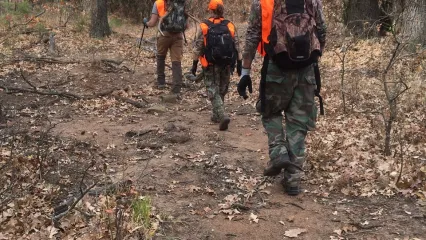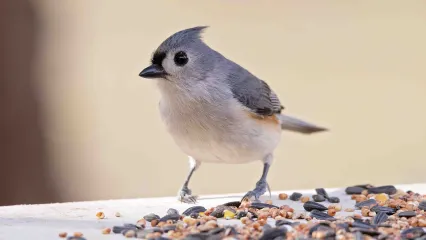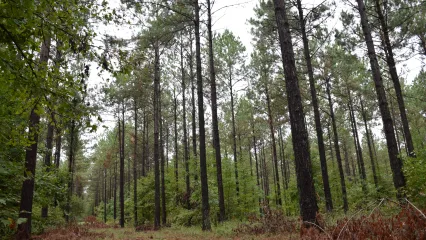Attention Non-Residents
The Oklahoma Wildlife Conservation Commission adopted new rules in 2025 that require non-residents accessing certain Oklahoma public hunting and fishing areas to check in and out of the area. By checking in and out of these areas, hunters, anglers, shooters, birdwatchers, hikers and any other users can help the Wildlife Department better understand how the area is being used. There is no additional cost associated with checking in or out of an area. There is no limit to the number of check ins for an individual in a year.
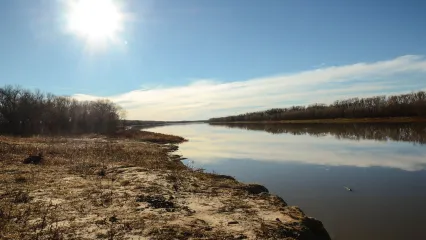
Contacts
Area Details
Kaw WMA covers 17,450 acres adjoining the upper two thirds of Kaw Lake in eastern Kay County in north central Oklahoma. Located just four and one half miles east of Newkirk, Oklahoma, Kaw WMA is a mixture of upland and bottomland forest, tallgrass prairie, old fields, and cropland.
Bluestem grasses and post oak- blackjack forests are predominate on upland sites, which are interspersed with sand plum thickets and agricultural fields. Bottom land forests consist of burr oak, hackberry, sycamore, sand plum and other species. The average annual precipitation for the area is 30 inches per year.
Going Quail Hunting?
During quail hunting season, wing collection boxes are placed at several wildlife management areas: Beaver River, Optima, Packsaddle, Cooper, Kaw, Drummond Flats, Canton, Fort Supply, Cross Timbers, and Pushmataha. Hunters are asked to donate a wing from each quail they harvest for research purposes. Ultimately, the wings can help determine the status of the quail populations at the WMAs and can offer clues about how next year’s season might pan out.
West arm – From Newkirk: 4½ miles east on E. River Rd (E0090).
South area – From Ponca City: 2 miles north on U.S. Hwy 77, 6 miles east on Sate Hwy 11, 2 miles north on Enterprise Rd, ¼ mi east on E0150.
East arm – From Newkirk: 13 miles east on E. River Rd (E0090).
- Pheasant: Very few present, most often taken as a bonus for quail hunters.
- Quail: Bobwhite quail occur in fair numbers during most years.
- Deer: White-tailed deer are abundant and highly sought after.
- Turkey: Rio Grande turkeys are present in good numbers and highly sought after.
- Rabbit: Cottontails are usually present in good numbers.
- Furbearers: Coyote, bobcat, and raccoon are plentiful.
- Dove: Good dove hunting is usually available.
- Waterfowl: Ducks and geese are usually available in good numbers.
- Squirrel: The fox squirrel is present in good numbers. Grey squirrels are also present in limited locations.
- Greater Prairie Chicken: Present, but only in low numbers.
- Bald Eagle: One of Kaw Lake’s most popular winter attractions is the American Bald Eagle. Traditionally, Kaw Lake has one of the states largest populations of wintering bald eagles. Numerous sites around the lake offer visitors excellent opportunities to view our nation’s symbol. Peak viewing opportunities occur in January.
- Osprey: Commonly observed along the shoreline in early fall.
- Upland Sandpiper: Present in low numbers on the east side of the WMA.
- Texas Horned Lizard: Present in low numbers on the east side of the WMA.
Approximately 4,000 acres are managed through a share crop agricultural lease program that are planted annually with both warm season and cool season crops. Typical warm season crop rotations include soybeans, sorghum, milo, and corn. Wheat is the primary cool season crop with the occasional field(s) planted to oats. These agricultural leases provide food resources for wildlife throughout the year and assist with hunter harvest success. The dove hunting program on Kaw WMA relies heavily on these agricultural leases as some leases provide standing wheat fields which are manipulated prior to the dove season opener.
In addition to the agricultural lease program, more than 1200 acres are managed through growing season grazing leases. Cattle are a very useful habitat management tool. Not only will cattle thin vegetation by grazing, but they will trample woody vegetation that is unpalatable helping to reduce or maintain current woody vegetation densities. Maintaining a desirable vegetation density is a key component when managing for upland game birds such as bobwhite quail and wild turkey. These leases are closely monitored by the area biologist to ensure approved stocking rates and dates are adhered to by lessees.
Another primary tool utilized across Kaw WMA is fire. Prescribed burns are rotated across the landscape and during different seasons of the year to stimulate desired plant communities. Fire has historically managed the wild habitats of Oklahoma and is vital for maintaining and improving habitats for most native species. The primary use of fire on Kaw WMA is to decrease canopy cover. Canopy cover, in a forested area, refers to the amount of overhead cover, i.e. branches and leaves on trees. By reducing canopy cover more sunlight is allowed to reach ground level. This stimulates plant growth allowing for more food resources at heights useable by wildlife.
Several primitive camping sites are available free of charge on the WMA for hunters and anglers (those possessing hunting and/or fishing licenses).. These sites are mowed in the early fall. Nine public use areas are available around the lake. Campers can select from over 250 campsites, many of which are equipped with water and electric hookups. Reservations for these campsites can be obtained from the U.S. Army Corps of Engineers. Ten boat ramps provide boaters with easy access to Kaw Lake. Once on the water, boaters can find two full service marinas located at Pioneer Park and McFadden Cove. The number for the Corps project office at Kaw is 580-762-5611.
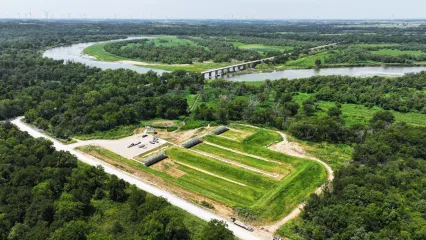
Features: (2) 100-yard rifle ranges with 12 covered shooting benches, 30-yard pistol range with six covered shooting benches, archery range with archery tower including four shooting lanes, and ADA access and parking.
Coordinates: 36°53'03.4"N 96°56'30.3"W
Directions: From Newkirk/US-77 N, travel east on 7th following the curves to River Road for 6.3 miles, turn left on N. Silverdale Lane and the shooting range will be on the left.
Be sure to review Department-Managed Area Rules on shooting ranges before use.
Kaw Lake and the Arkansas River have long been known for producing some of Oklahoma’s largest catfish. The flathead, blue and channel catfish all reside in the lake. Kaw Lake also offers anglers excellent opportunities to catch crappie, sand bass, black bass and walleye. The lake covers 17,000 surface acres and has 168 miles of shoreline.
Closed Seasons
Same As Statewide Seasons
Seasons w/ Special Restrictions
- Deer Gun
Open during the first nine days only.
- Pheasant, Snipe, Woodcock, Rabbit, Squirrel
Closed during the first nine days of deer gun season.
- Quail
Closed during the deer muzzleloader season and the first nine days of deer gun season.
- Turkey Fall Gun
Tom only, shotgun only.
- Pursuit with Hounds for Furbearers
Closed from the opening day of deer archery season through deer gun season.
- Turkey Spring, Youth Turkey Spring
One-tom limit; seasons combined, area combined.
Hunter and angler camping is allowed in designated areas.
Bartlesville Area Convention and Visitors Bureau
201 SW Keeler
PO Box 2366, Bartlesville OK 74005
918-336-8708
1-877-273-2004
Kaw Lake Association
877-671-6985
580-762-9494
kawlake@kskc.net
4128 Lake Road Ponca City 74602
Oklahoma Tourism and Recreation Department
Post Office Box 52002
Oklahoma City, OK 73152-2002
(800) 652-6552 or (405) 521-2409
www.travelok.com
Perry Chamber of Commerce
PO Box 426 Perry 73077
580-336-4684
www.perryok.org
information@perrychamber.ok
Ponca City Tourism
516 E Grand Avenue
866-762-8092
www.visitponcacity.com
Ponca City Chamber of Commerce
www.poncacitychamber.com
Q: Do I need a permit to hunt Kaw WMA?
A: A hunting license and appropriate game licenses (tags) are required to hunt on Kaw WMA. There is not a use permit required unless using US Army Corps of Engineers (USACE) boat ramps or campgrounds.
Q: Does the USACE property on Kaw have the same rules as Kaw WMA?
A: Yes. As outlined in the Oklahoma Hunting and Fishing Regulations, USACE lands open to hunting but not licensed to the ODWC are open during the same dates and under the same regulations as ODWC-managed lands at the respective property, unless otherwise provided.
Q: Is it worth hauling my boat for deer hunting?
A: This could be helpful in years when the lake receives average and above average annual rainfall. If the lake receives below average annual rainfall many of the creeks utilized for boat access will not be flowing. However, a boat can provide access from the lake most every year, regardless of rainfall amounts if the boat ramps are useable.
Q: How much hunting pressure does Kaw WMA receive?
A: Kaw WMA is a destination hunting location for deer hunters, dove hunters, duck hunters, rabbit hunters, squirrel hunters, quail hunters, trappers, etc. Kaw WMA is heavily pressured throughout the year during most every open season. Hunters should consider hunting during the week or after opening weekend.
Q: Where can I camp on Kaw?
A: The USACE has campgrounds available for use that have seasonal water and electric hookups. For more information visit: https://www.recreation.gov/. Kaw WMA has numerous primitive campgrounds that are available for hunter and angler camping. For locations and more information check out ODWC's WMA maps.
Apprentice Designation: A Learner's Permit for Hunting
Hunter education has greatly reduced hunting accidents, but if you can’t complete a course right away, the apprentice designation allows you to hunt under supervision. It works like a learner’s permit, giving you the chance to gain real experience safely until you finish hunter education.
Exploring the New Herron Family WMA
The new Herron Family WMA is more than 17,000 acres of hunting land, it is also adventure, access, conservation, and tradition. Thanks to a unique partnership, Oklahoma residents now have a new place to chase deer, call turkeys, hear quail, and pass on the outdoors to the next generation.
